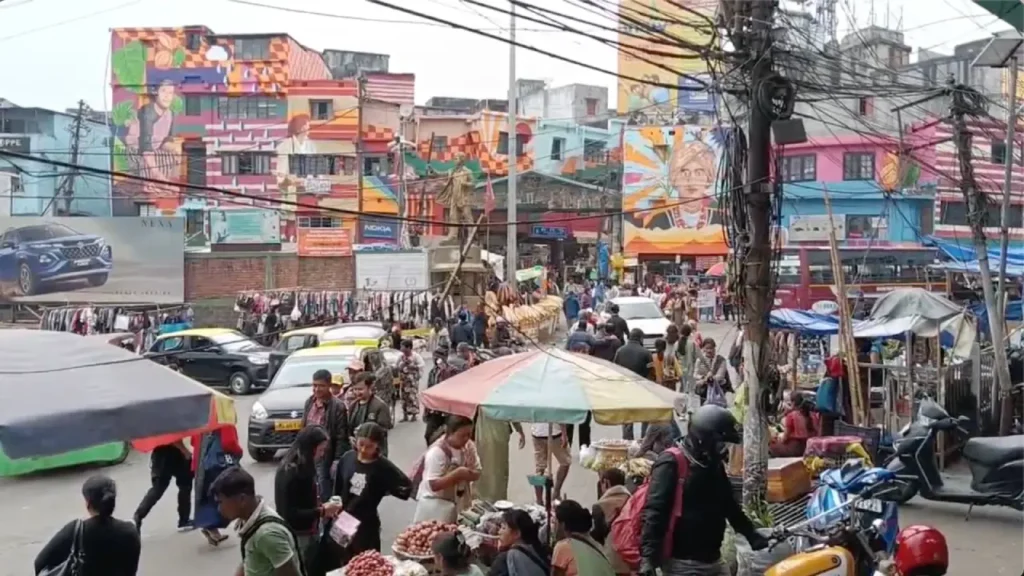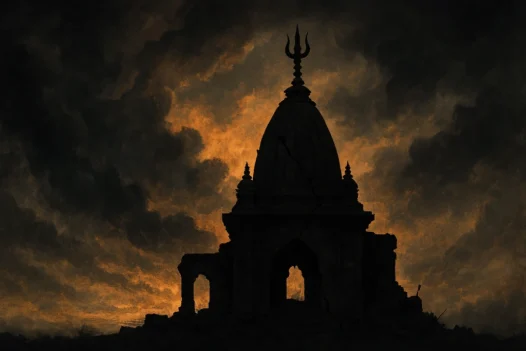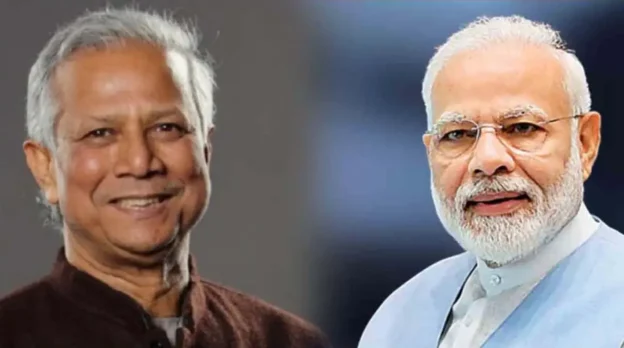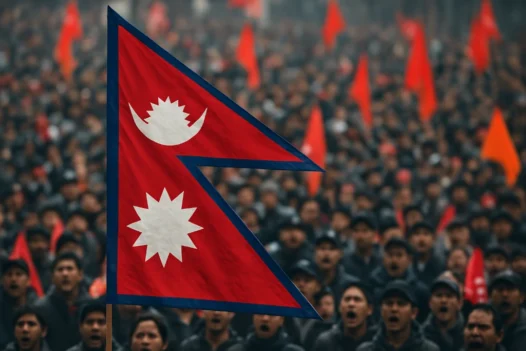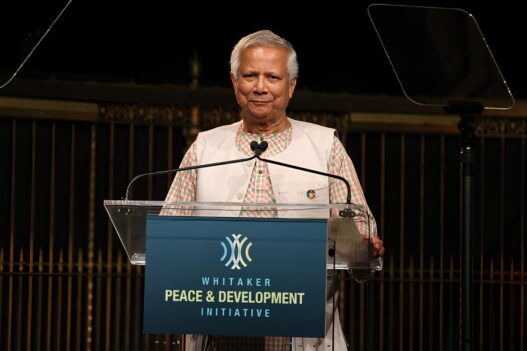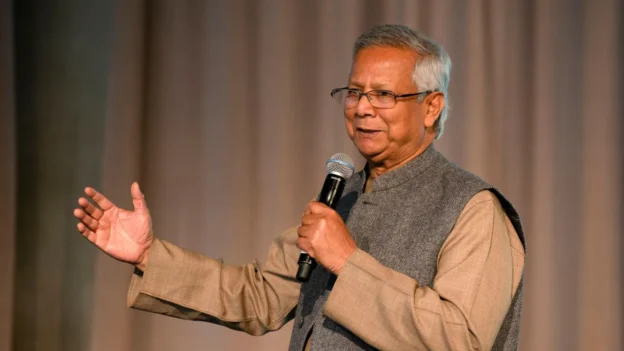Tucked in the heart of Shillong lies one of the oldest and most enchanting marketplaces in North East India—Iewduh, also lovingly known as Bara Bazar. A friend from Delhi once described it as “a storehouse of local knowledge—not just of goods and vegetables, but of local herbs and rare plants with deep medicinal wisdom.” That sentiment rings true the moment one steps into this bustling, breathing entity that is more than a market—it is memory, identity, and heritage folded into every corner.
In Khasi, “Iewduh” means the “biggest market” with iew meaning market and duh meaning biggest. And rightly so. This isn’t just a place of commerce; it is where the soul of the Khasi people thrives, a space where history, faith, culture, and livelihood converge in rhythmic harmony. Dating back to at least 1874, Iewduh has stood as the principal hub of trade and cultural exchange, long before colonial footsteps touched these hills. It served as the economic heart of the Hima Shillong-Nongskeh—then a flourishing kingdom—and continues to be the lifeline of the Khasi and Jaintia Hills today.
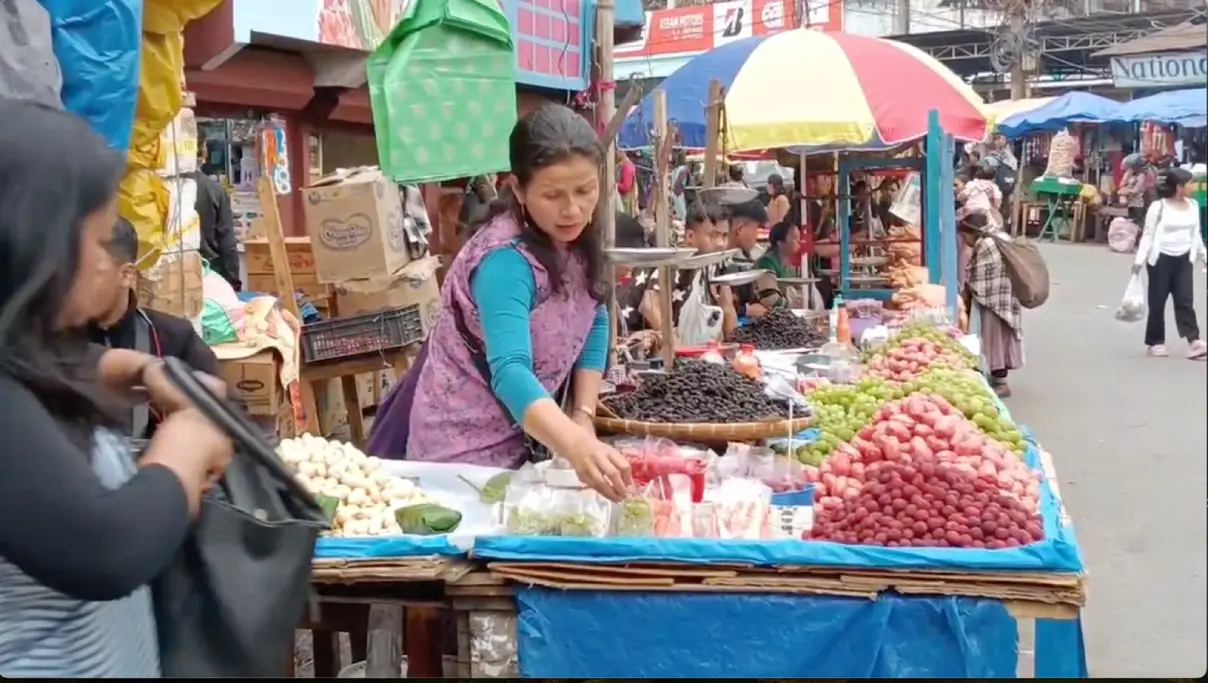
Yet, despite whispers of poor upkeep and deteriorating infrastructure, Iewduh refuses to lose its pulse. The shops may be worn, the sheds rickety, the management wanting—but its spirit is unshaken. To every Khasi and Jaintia, it is not just a market but an inheritance. It remains the heart of economic life, a place where generations have met, traded, and passed on more than just goods—stories, customs, and relationships.
Often referred to as the “rice bowl” of the Khasi and Jaintia Hills, Iewduh plays a vital role in nourishing both the stomachs and economies of the region’s rural heartlands. “Iewduh is more than just a marketplace; it’s a cultural epicentre where different communities come together, showcasing the region’s rich diversity through its goods and traditions,” remarked a local observer.
Nestled under the guardianship of the Syiem of Hima Mylliem—one of Meghalaya’s most respected traditional institutions—Iewduh thrives through an indigenous system of administration recognised by the Khasi Hills Autonomous District Council (KHADC). Every morning, the market awakens to the rhythm of life as hundreds of vehicles roll in, bringing with them traders, farmers, and buyers whose lives are woven into its daily bustle. It is a place where livelihoods are forged, where commerce expands with each season, and where the pulse of business beats louder every year through the steady rise in stalls and vendors. On festive days, Iewduh transforms into a vibrant sea of colour and sound, its narrow paths brimming with movement and celebration. More than a marketplace, it is Shillong’s enduring soul of trade and tradition.
Come any day but Sunday, and you’ll find yourself engulfed in a wild, sensory maze—narrow lanes, shuffling feet, cluttered sheds, voices calling out, and scents swirling through the air. You’re either gently stepping over toes or apologising for someone stepping on yours. But in that bustle lies its magic.
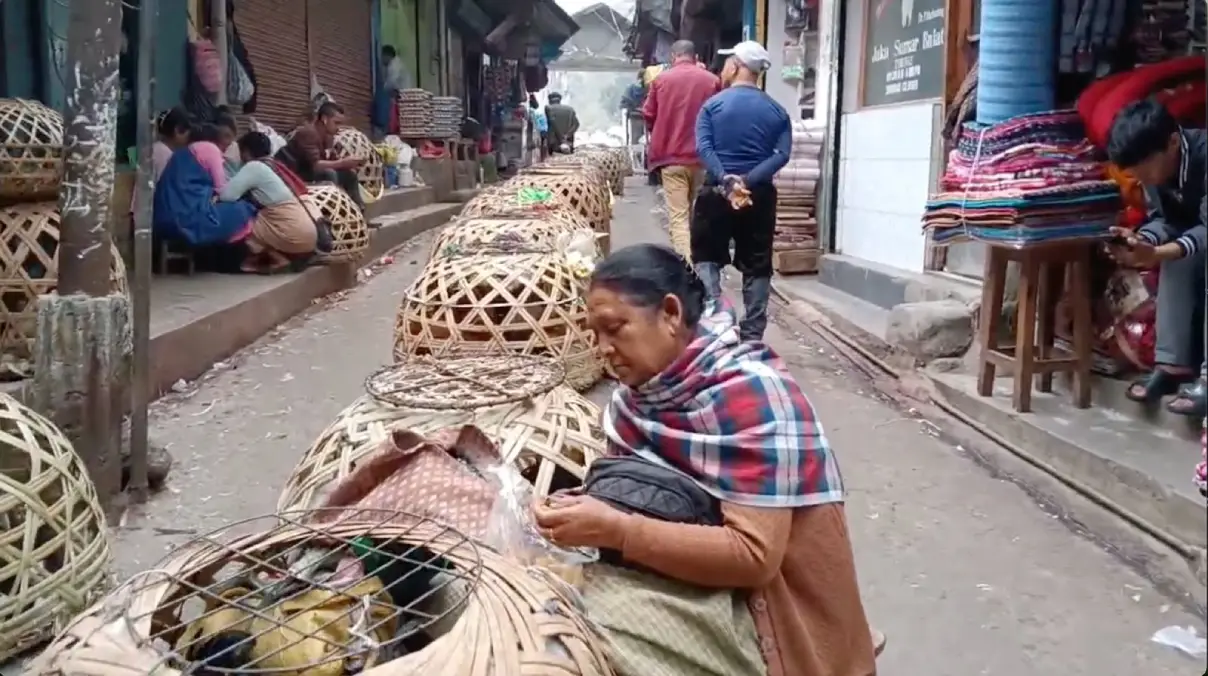
Babhesh, a food and market enthusiast from New Delhi, once marvelled, “It’s truly incredible—I haven’t seen anything like this.” And it’s easy to see why. From neatly arranged stacks of vegetables, fresh fish and meats, to stalls filled with school supplies, fragrant bakeries, steaming jadoh, chai counters, colourful textiles, flower shops, and traditional decor—there’s something for every sense. The famed Chinese shoemakers, though fewer in number today, still craft the legendary leather boots once worn with pride.
But perhaps the market’s most prized treasures are its herbs, spices, and plants—many of them endemic to the Khasi hills and nowhere else on Earth. Beyond their medicinal and culinary value, these plants form part of a resilient, sustainable indigenous food system where far-flung villages contribute to a thriving local economy. The knowledge of their uses, passed down through generations, finds new life on these wooden counters and steel pans.
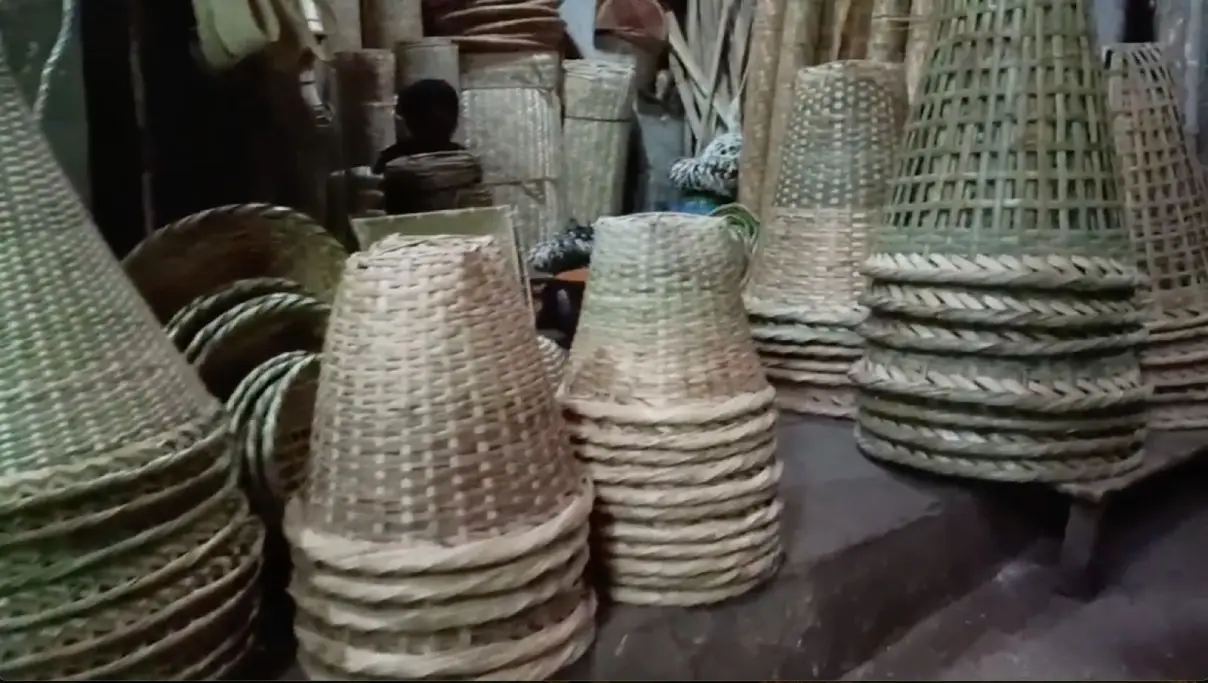
One dietitian, after spending time in Shillong, was so fascinated by Iewduh’s biodiversity that she shared her discoveries on social media platforms including The Borderlens. To her, these weren’t just ingredients but living stories—wild seeds, edible plants, and traditional foods with ancient roots.
Think of Pumaloi—fluffy steamed rice cooked in a Khiew Ranei earthen pot, served with pork, chicken, or vegetables. Or Tungrymbai, a soul-warming fermented soybean dish beloved by the Khasi and Jaintia tribes. Then there’s Puhklein, the sweet deep-fried rice flour snack that brings smiles across generations. And not to forget the unforgettable Doh-Khlieh—a zesty pork salad made with pork brain and vegetables—and the cheer of Kyat, a local fermented rice beer. Every foodie finds a revelation in Iewduh.
Spices here are stories in themselves. Sying Makhir, a medicinal ginger for coughs and colds. Sying Bah, the plump-fingered ginger with a juicier bite. The prized Lakadong Haldi—a turmeric so potent with curcumin (above 7%) that it’s known across India as the golden spice of the East. There’s Sla Tyrpad (bay leaf) with anti-inflammatory virtues, Jaïur (Sichuan Peppercorn) known for healing, Soh Marit Khlaw (black pepper) for boosting nutrient absorption, and Sohmynken Beb (Bhut Jolokia)—the fiery ghost chilli with the highest capsaicin content on earth.
From Squash (Cucurbita leaves) to Khliang Syiar (Centella Asiatica) for brain health, U-Bit (beetroot) for memory, Jyllang (Allium hookeri) for hypertension, and Jajew (Begonia Josephine) cooked with potatoes and dry fish—each has a tale of healing, rooted in local lore.
Religiously too, Iewduh is sacred ground. For centuries, it has stood under the spiritual watch of the Hima Mylliem. A ritual of thanksgiving is offered annually to the Shillong deity in a special site within the market—a tradition that echoes the ancient belief that the first market was ordained by God to honour the bond between man and animal. That sacred understanding is why cheating and deception are seen as taboos in such places.
An article by Barnes Mawrie in The Shillong Times offers a vivid portrayal of Iewduh as more than just a marketplace—it is a cultural confluence where people from across the Khasi and Jaintia Hills have long gathered to share stories, affirm identities, and uphold age-old traditions. Mawrie highlights how, during the annual ritual sacrifice, the spirit of the community comes alive, turning the market into a stage where collective memory and heritage are enacted in real time. For the Khasi, markets are not merely centres of trade but cultural anchors, shaping their very sense of time—measured not by conventional calendars but by market days like Iew-umni, Iew-lyngka, Iew-nongpoh, and Iew-shillong. And standing at the core of this vibrant cultural rhythm is the timeless, ever-thriving Iewduh.
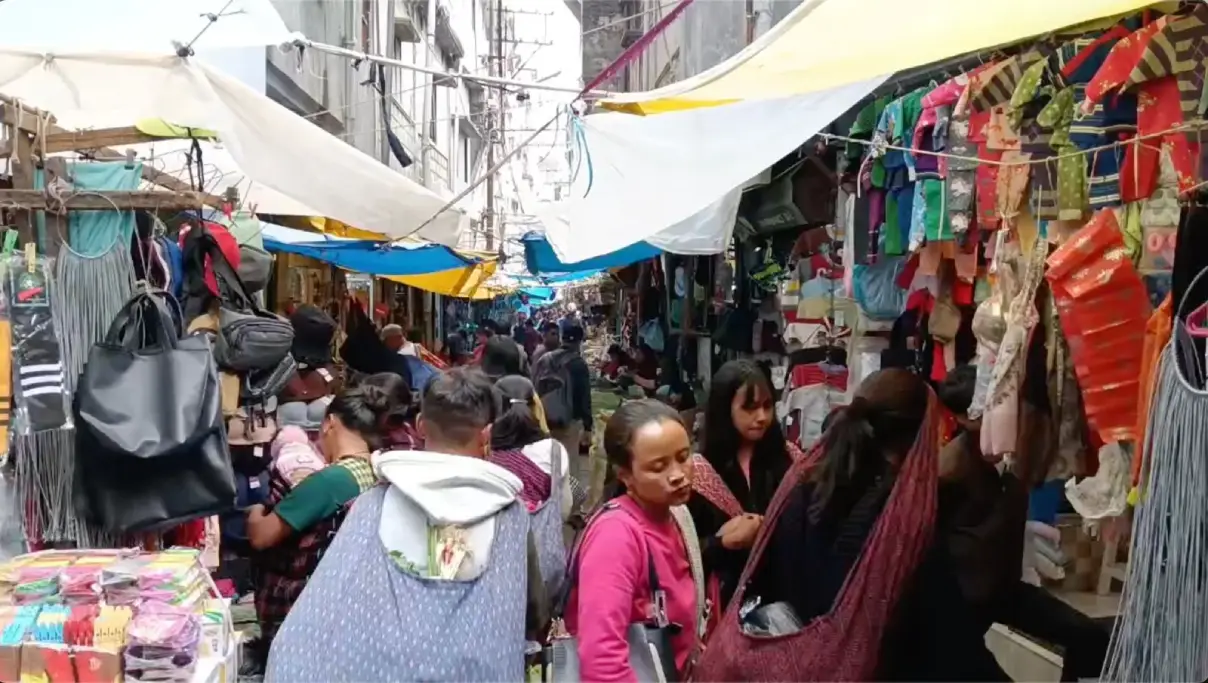
As of 2020, the market officially hosted 1,222 shops. During the COVID-19 pandemic, only 623 were permitted to open under strict orders from the Deputy Commissioner of East Khasi Hills. But by 2024, that number had surged to over 4,500, largely due to the subdivision of larger shops and vendor spaces. Myntri Kharlukhi of the Mylliem Syiemship proudly notes that the market now supports over 15,000 livelihoods—each person, each family, contributing to this living legacy.
North of the market lies a quiet sanctuary, a space of worship and gratitude, where every November the community gathers to thank the Creator. This sacred rhythm, this merging of commerce and reverence, makes Iewduh not just a market, but a beating heart of a civilisation that continues to honour its roots, while embracing the rush of modernity.
Through every clatter of pots, every whisper of a spice leaf, and every footfall on its narrow, dusty lanes, Iewduh sings a song—a song of resilience, identity, and the undying spirit of the Khasi people.

